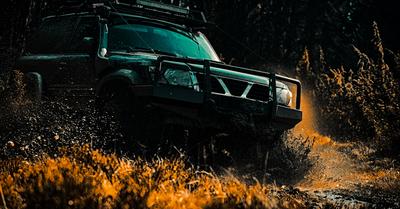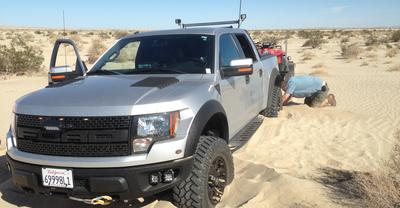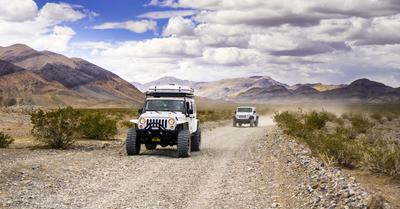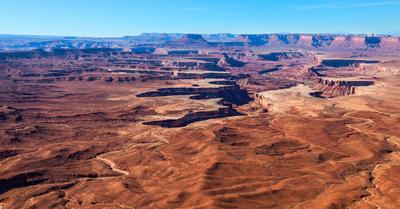Off-road clubs are a fun way to make friends and grow the community. You can start your own off-road club with a few easy steps.
To start an off-road club, you’ll need to come up with a name and a logo and decide what kind of club you’re going to be. Start with friends and associates and go on weekend off-road trips. Then create a social media account to spread the word about your club.
In this article, we’ll go over everything you need to know about starting a small off-road club. We’ll cover how to grow your club, how to establish club leadership and delegate responsibilities, and how to generate revenue without charging membership fees.
We sourced this information from successful automotive clubs and analyzed their origin and methods to find the best strategies.
This article may contain affiliate links where we earn a commission from qualifying purchases.
What Is an Off-Road Club?
A lot of things can be classified as off-road clubs, though generally speaking, an off-road club is a semi-formal organization of off-roading enthusiasts who meet and participate in events. Off-road clubs often go out on group off-roading trips, go camping, and participate/host shows.
Off-road clubs are usually free of membership fees, though some have a small recurring charge. They sell and give away branded merchandise, make videos, set up forums, and host swap meets for parts, vehicles, and accessories.
Are Off-Road Clubs Expensive to Form?
Actually, no—it technically doesn’t cost anything to create an off-road club. You’ll need members and might have to advertise to get them, but the act of creating a club is free. Here are a few parts of the process that do cost money.
Creating a Brand
An off-road club can also be a brand. You don’t have to sell anything (but you can), though most off-road clubs have a logo and a name that sets them apart. The best way to create a brand is to take some time to research how other successful clubs do it, then to create your own version.
Establishing a Scope
What kind of off-road club are you making? There are tons of different kinds of off-road clubs, and starting one with a specific scope or goal can make it easier to find members. For example, some off-road clubs are dedicated entirely to rock crawling, and others entirely to Toyota Tacomas or Jeep Wranglers.
Setting Up Trips
Off-road clubs should have regular outings for members to enjoy a trail. You should set up semi-regular meets and activities that allow members to show off their trucks, test their skills, and fraternize with other members.
Local off-road outings on Saturdays and Sundays are a great place to start, as are trips to swap meets and car shows. Truck meets are a recent phenomenon as well, which you can bring the entire club to if you get wind of a meet going down in a parking lot somewhere.
Documenting Trips on Social Media
Social media is essential if you want to form a new off-road club. Social media is the biggest platform used by off-roaders (and virtually everyone else), and it’s a great place to get the word out about your club.
Additionally, it gives you a central location to document your club’s experiences, which is both fun and accessible to all of the members. Running a social media account for a club is also completely free, and it gives you an easy platform to invest in inexpensive advertising with excellent relevance and interest targeting.
How to Find Members for an Off-Road Club
So, how do you go about finding members for an off-road club? It’s actually pretty simple, and it starts with establishing word-of-mouth communication with fellow enthusiasts.
Your friends are a great place to start, especially if you’re all into off-roading. Offer to form the club with them, as it allows you to begin with more than one member. Get some stickers, and a logo made and put them on your trucks, and spread the word by simply driving around.
If you want to attract members, you’ll need to actually do something with your club. Schedule a monthly or bi-weekly off-roading trip on the weekends, and post about it on Instagram or Facebook. Be sure to tag the location, so other people know where the club is located.
You can use social media advertising to grow your membership as well, especially if your club has a website. Be sure to update content regularly so people know the club is active and members are engaged.
When new members join, ask to feature them and their rig on the club’s social media pages. People love being recognized, and it’ll help them feel like active and valuable participants in the club. Plus, there’s a good chance they’ll share the photos to their social circle, which can prompt other members to join as well.
Establishing Club Leadership
There’s no set-in-stone way to lead an off-road club. However, as the club grows, you’ll have to establish responsibilities throughout. Someone has to decide where to go, organize meetings, manage logos and merchandise, deal with the website, etc.
This work can be paid or volunteer, and you can do it yourself or delegate responsibilities equally to a board of senior members. If you decide to pay people, you can raise money by selling club merchandise or taking donations.
Creating a Board of Directors
If you decide to establish a board (which is recommended), you can delegate responsibilities equally among the members. For a small to medium-sized club, try to keep the number of board members at a minimum of 3 and a maximum of 7.
Use odd numbers when selecting a board, including yourself. This will prevent a deadlock when voting on major club decisions, such as where to go or what merchandise to sell. Additionally, a board of 5 to 7 members will give club members the chance to feel like there’s not a single person making all the decisions.
You can hold annual board elections amongst club members, who can vote themselves into “office” or remove people who aren’t steering the club in the right direction. If you want people to take your club seriously, this is a great step towards making everything feel legitimate.
Casual Club Leadership
But perhaps you don’t need a board. Maybe your small club doesn’t need much leadership, and it’s just an informal gathering of off-road enthusiasts. If this is the case, then you can simply discuss trips and moves with a few members and decide that way.
It doesn’t have to be complicated—but there’s also nothing wrong with establishing a chain of command. Voting and other activities may seem complex, but they actually make decision-making more efficient and fair.









